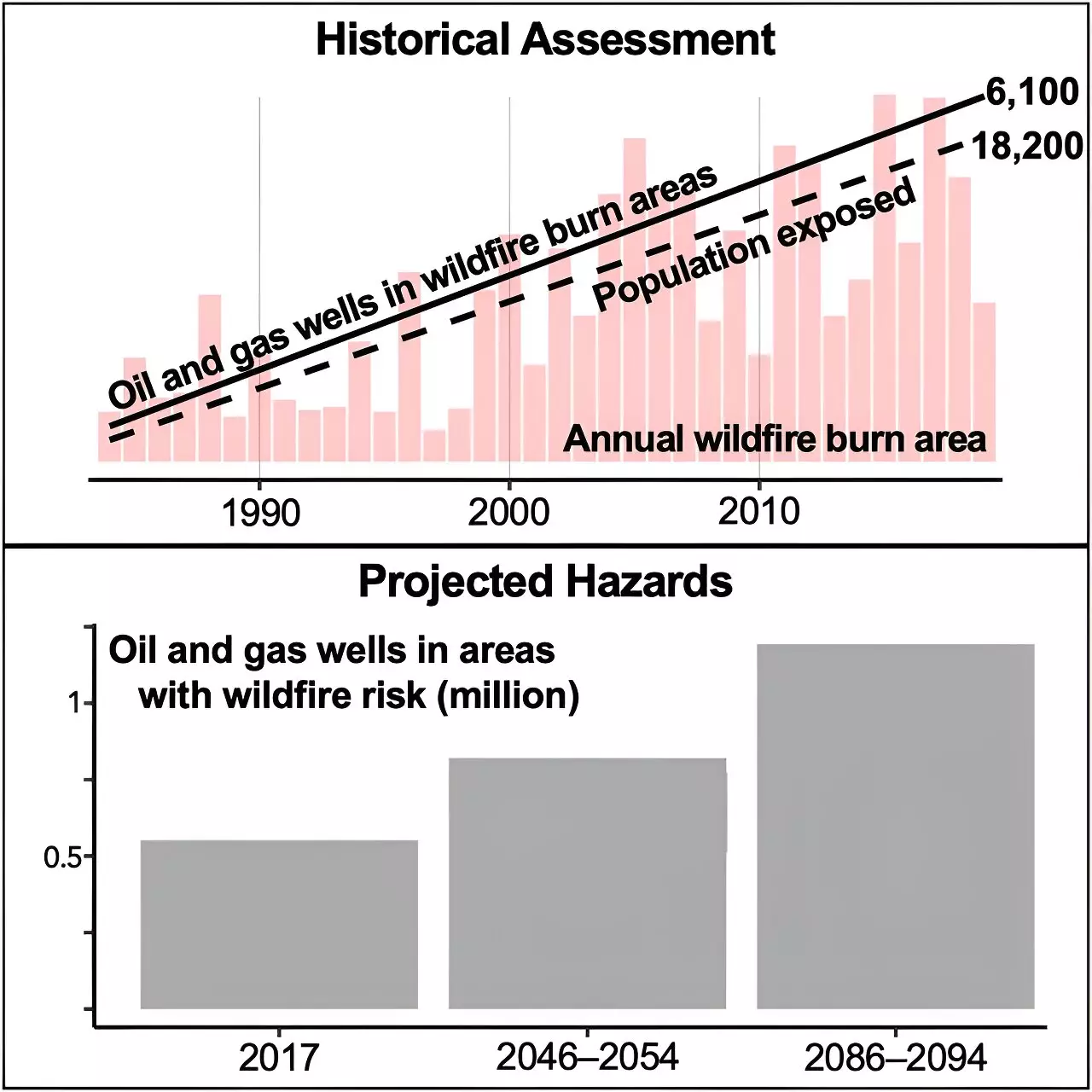A recent study conducted by researchers at the University of California, Berkeley, sheds light on the concerning overlap between oil and gas wells and areas burned by wildfires in the western U.S. The analysis, published in the journal One Earth, is the first of its kind to examine the historical and projected wildfire threats on oil and gas facilities in the country. The findings reveal that more than 100,000 wells are located in regions that have been affected by wildfires, posing a significant risk to both public health and the environment.
The study highlights the pressing need to understand the compound hazards associated with oil and gas infrastructure in wildfire-prone areas. David J.X. González, an assistant professor at UC Berkeley’s School of Public Health, emphasizes the environmental justice issues that arise from the concentration of wells in populated regions with high wildfire risk. Particularly in counties like Los Angeles and Kern, where drilling activities coexist with residential communities, the potential for disasters exacerbated by climate change is a cause for concern.
Many marginalized communities, including Asian, Black, Hispanic, and Native American populations, are disproportionately exposed to the hazards posed by oil and gas wells in burn zones. The proximity of these communities to leaking wells increases the risk of explosions, blowouts, and chemical exposure. As the number of wells in high-risk wildfire areas continues to grow, the potential health effects on nearby residents become more significant.
Looking ahead, researchers predict that the number of wells in areas at risk of burning will nearly double by the end of the century. This trend underscores the urgency of implementing policies to safeguard public health and the environment. González emphasizes the need for greater oversight and regulation to address the escalating risks posed by wildfires to oil and gas infrastructure.
While research on the health effects of oil and gas development is expanding, there remains a lack of studies on the consequences of fires burning near drilling sites. The potential for toxic chemicals to be released into the environment during wildfires poses a significant challenge to public health. As supercharged fires become more common, the intersection of fire and industrial operations creates a complex set of risks that demand immediate attention.
The findings of the study underscore the need for a comprehensive approach to mitigating the risks posed by wildfires to oil and gas infrastructure. By addressing the environmental justice concerns, public health implications, and policy gaps highlighted by the research, stakeholders can work towards ensuring the safety and wellbeing of communities living near oil and gas wells in wildfire-prone areas.


Leave a Reply